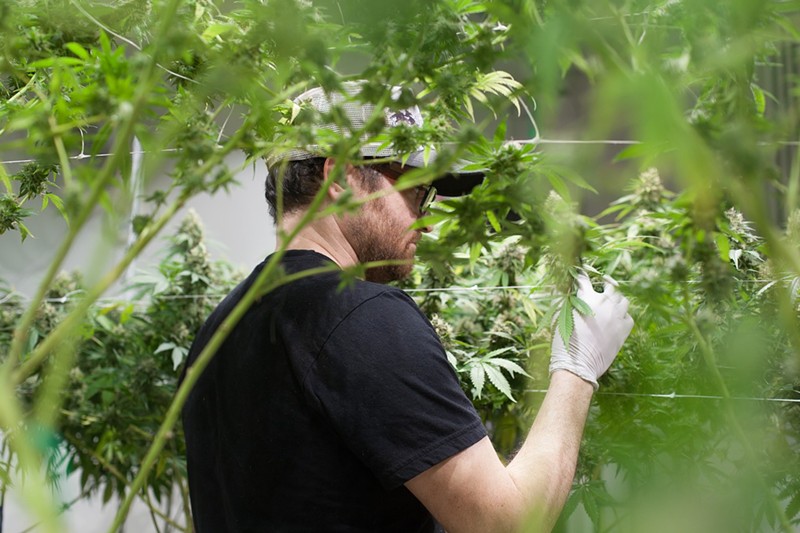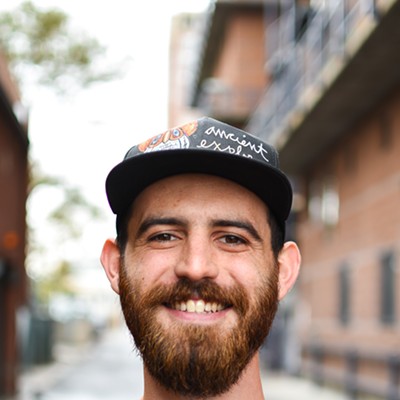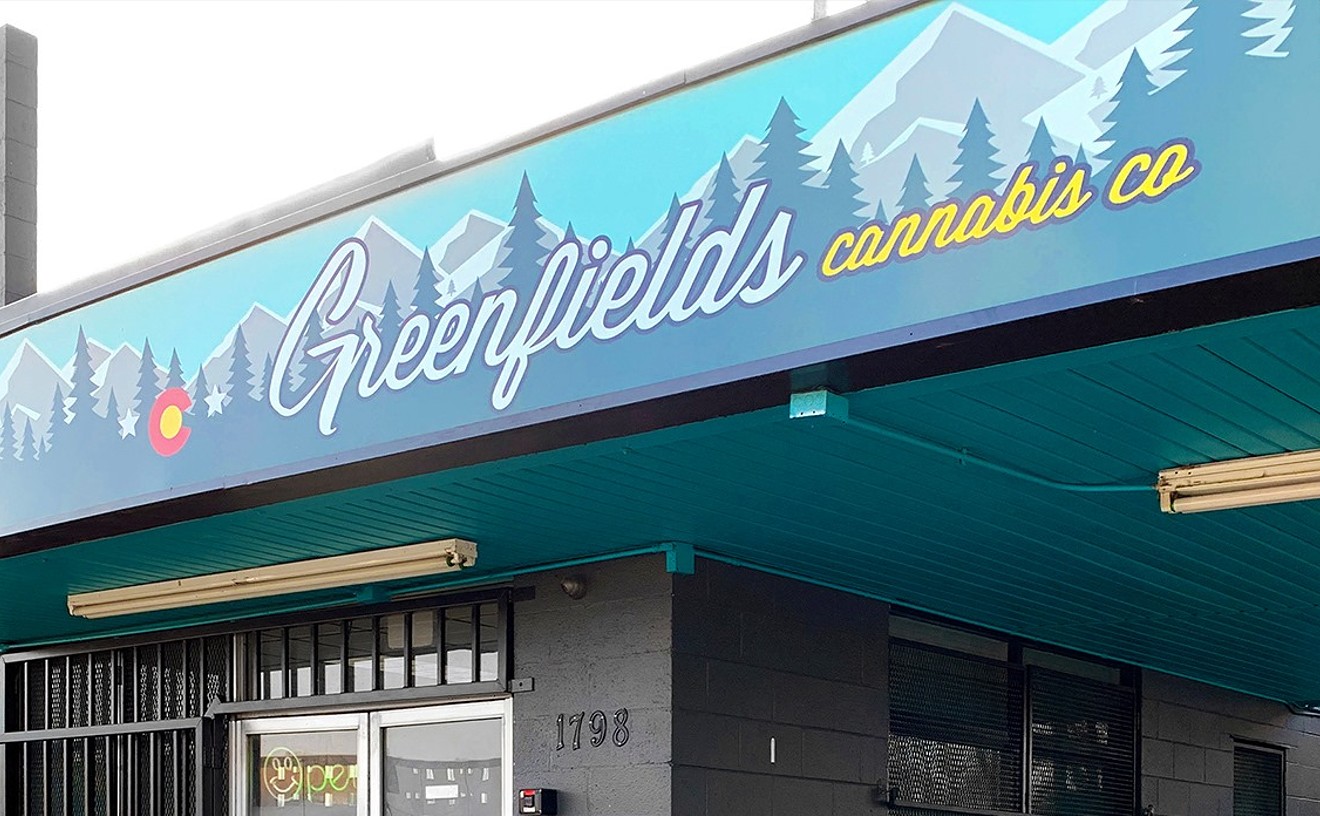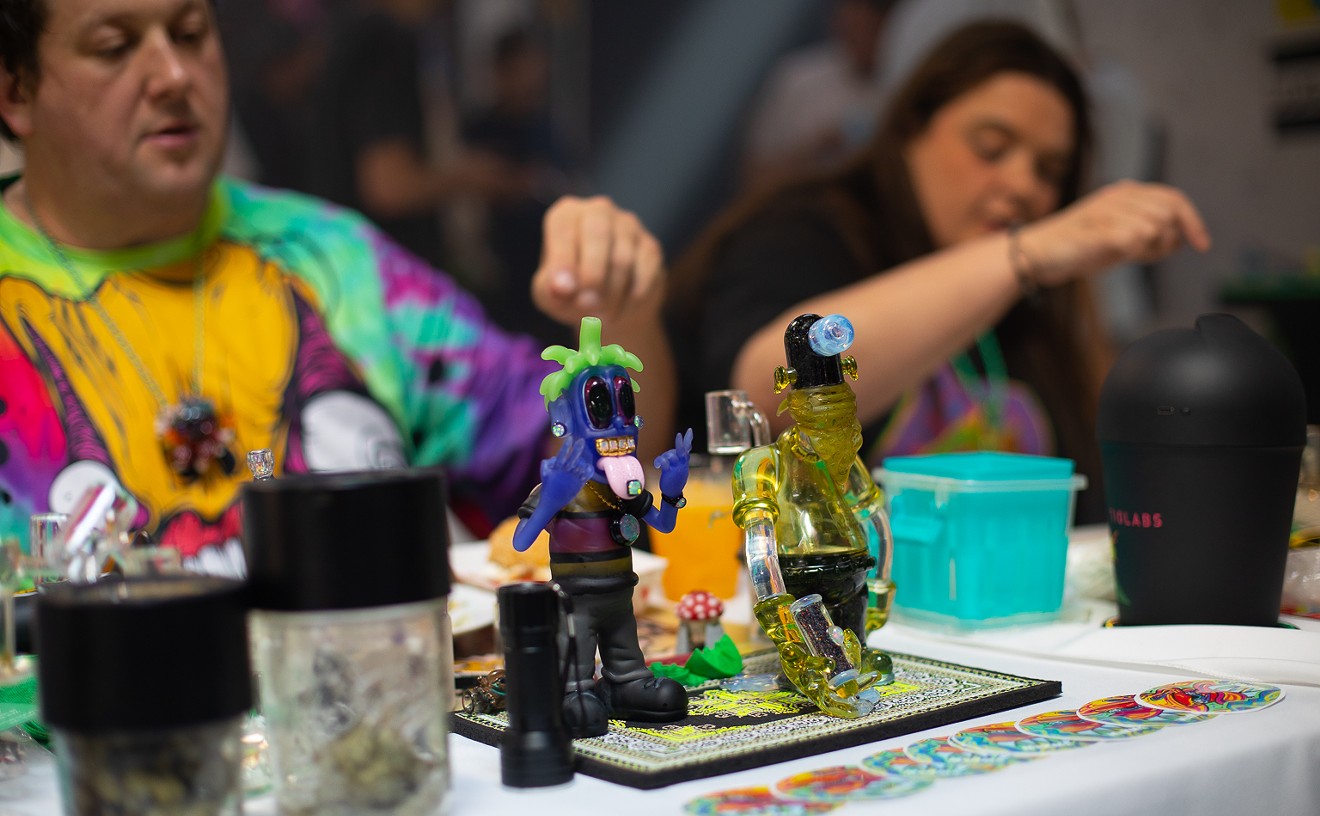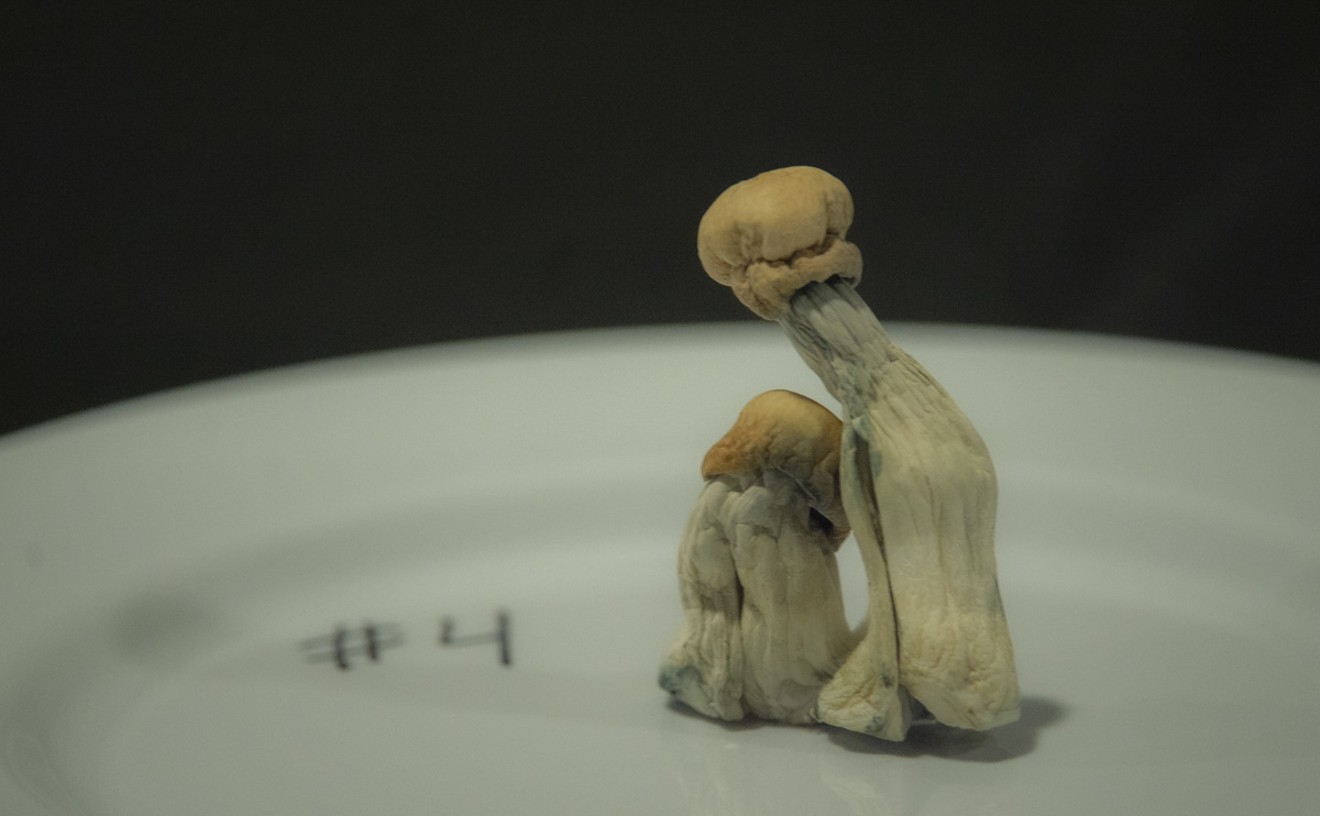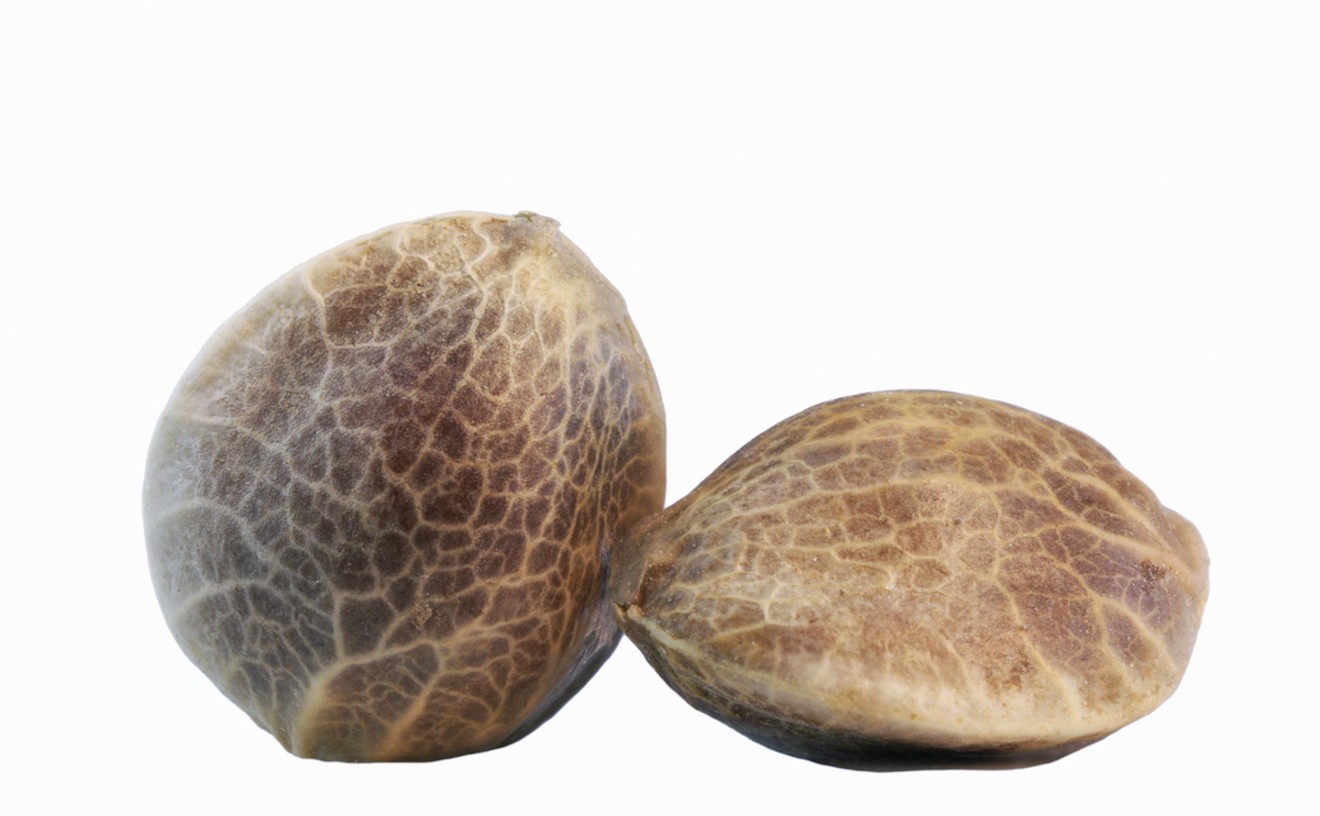From Boulder to Canada, Danny Murr-Sloat is sharing his stash.
Although his run at commercial cultivation in Boulder County didn't work out, Murr-Sloat's cuts of Lemmiwinks, Tegridy Cookies, Django, Orange Chemsicle and other strains impressed a lot of noses. Tired of limiting himself to Colorado's fading cannabis market, the Boulder native took his cultivation brand, AlpinStash, on the road as a growing consultant in 2021, and has since worked with several major brands in the United States and Canada.
To learn more about cannabis trends and his evolution from medical patient to grower, we talked to Murr-Sloat about his time in Colorado, candy terps, his three desert island strains and more.
Westword: You credit medical marijuana with helping you deal with chronic stomach pains and keeping you off prescription medications. How did your medical marijuana journey start?
Danny Murr-Sloat: In 2003, shortly after my 21st birthday, I was hospitalized for intense abdomen pain. While the intensity let up a bit after I was released, I was still in pain and was discharged with an opiate prescription. I spent the next six years trying to receive a diagnosis and was put on ever-increasing doses of pain medication, including massive amounts of fentanyl.
During this period I developed thoracic outlet syndrome, a nerve impingement syndrome in my right arm, which caused a lot of pain and nerve loss. This ended up requiring three separate surgeries to fix. I also developed an acoustic neuroma, a non-cancerous base skull tumor, which also required surgery to remove.
By 2009, I was in dire straits. I had spent the last three or so years mostly in my room, totally isolated from society and peers, overweight, and on over nineteen different prescriptions just to attempt to function in any capacity.
My father suggested I try cannabis, which was recently legalized for medical use in Colorado. I made my first flower purchase in late November of 2009, which came with a free clone. This completely changed the trajectory of my life.
The physical relief that ingesting cannabis provided allowed me to wean myself off all the pain medicine I had been taking for the last six years. Cultivating cannabis gave me a reason to get out of bed. It gave me a passion that was paramount to my ability to plug back into life. I clearly saw a path forward for my life, and cultivating cannabis professionally became a goal of mine and something I dedicated myself to.
How does being a medical patient impact your attitude as a grower? I imagine you have to pay attention to consumer trends and desires, too. Does that ever conflict with the medical patient mindset?
I understand, at a deep level, that cannabis is a consumed product. Whether ingested for medical or recreational reasons, people take this plant into their body with the goal of having a positive impact in their life, and there is a big responsibility that goes with this knowledge. Any cultivator should have the weight of this foremost in their mind, and use it as a drive to create an ethical and clean product.
Consumer trends are a hard one to pin down. As a cultivator, anything that you decide to grow today will not see the market for three to six months. As a breeder, that timeline is extended to a year-plus. It’s like hitting a moving target that changes in size and shape.
My approach has been to breed and cultivate what I personally like and believe in, then trust that the consumer will agree. I think this translates well to the medical patient, as the intention in this approach stays true to my values.
Just how much has the potency, terpenes and output of cannabis evolved since you started growing in 2010?
In the early days, we didn’t have reliable data for potency and terpenes, and went off subjective experiences. Since the beginning of reliable testing, I have seen a steady increase of potency and terpenes.
Back when potency testing began, seeing numbers in the mid- to high-20s was uncommon, and in the 30s was extremely rare. Now these number ranges are commonplace, and it seems we have hit a ceiling in terms of potency.
Once we can quantify something, we can work to improve it. In addition to selective breeding, this also includes testing the effects that different growing techniques, environmental tweaks, nutrients, etc., can objectively have on potency — although potency, as represented by THC, is a fallacy and detrimental to the industry in general. The more research and subjective experiences we have, the more we learn that THC is only part of the picture, and that the entourage effect — the synergistic effect of different cannabinoids, flavonoids, and terpenes — plays a big role in how it affects our experience.
Even if THC was the determining factor in the potency of a product, focusing on this means that we negate the consumption experience as a whole. I would love to see a day where it is as much about the appearance of the product, the smell, flavor, the smoothness of the smoke, and the experience as a whole as it is about the potency. If someone is just chasing potency/THC, then concentrates are a much more economical option.
Interestingly enough, I have not seen the same increase in average yields. They are still at what they have been for a while. Though some folks are hitting outstanding numbers, they remain in the minority. I would say more people are hitting the average number of fifty grams per square foot of canopy, or 1.75 to two pounds a light.
What kind of genetics and strains are popular at the moment? Are we still in an era of candy terps, or has something new stepped in?
Candy and dessert terps are still in high demand, as are the gas and fuel types. I believe that this is getting played out, and I see some retro genetics making a comeback. I am so excited to work with some of the old-school cuts that many of us loved in the early days: AK-47, Bubble Gum, Blueberry, White Widow, White Rhino, Durban Poison, Green Crack, to name a few. I’m looking forward to mixing some of these with the genetics I’ve been breeding. These older Dutch cuts bring back such fond memories and have such outstanding highs.
You used to run a cultivation in Colorado. What made you decide to shut it down?
In 2021, I took a position as the director of cultivation for a large Canadian company, which required myself and my family to relocate to Canada. It was an adventure and an experience that I couldn’t turn down. I ran AlpinStash remotely, and while I had an outstanding team, it was not sustainable to work my job in Canada, be a present, supportive husband and father to a toddler and a newborn, and own/run a business in the States. In addition, between the industry compression and wholesale price reduction, it was difficult to make ends meet for our Colorado company. It was a really tough decision, but it was the right one at the time.
Colorado growers have gone through a lot over the past few years, from declining wholesale prices to testing rules to higher licensing fees. What's your outlook on the overall health of Colorado's cannabis growing sector?
It’s a hard industry to be in, period. And cultivation is probably the most difficult sector in cannabis. It’s tough for the little guys and it’s tough for the large MSOs. While my long-term outlook remains positive, the next few years will remain a slugfest for survival.
Unfortunately, many businesses started when prices were much more favorable and did not focus on reducing the price to cultivate, nor did they build a facility with this in mind. This means that a business that is facing this compression will have to pivot substantially and make some hard decisions to stay open. Having said this, I still believe that there is room to grow and to thrive — but only those who are focused, disciplined, and have the right mix of branding/marketing, quality and business savvy will profit in today's market.
Let's say I'm newly licensed in Colorado and ready to start a grow. What advice would you give me in terms of setting expectations? What genetics or strains would you build around?
Thoroughly understand your cost to produce, and work to reduce this. Find the mix of automation, technology, yield, quality, consistency and the art of cultivation to be profitable. Invest in the right infrastructure and personnel (these will make or break a company). Be prepared to feel the stress and the squeeze. I can’t tell you how many times I felt the bottoms of my feet with my stomach because something stressful happened. Have a really solid brand identity and marketing plan in place.
As for genetics, I would focus on finding the right cultivars, which are easy to maintain and grow well in your individual facility. I firmly believe in the old adage of “right plant, right place.” For us, this meant focusing on breeding cultivars that thrived in the indoor commercial environment — meaning they had disease resistance, great potency and terps, yielded well and were easy to maintain. As a result of all of my work, AlpinStash Genetics and Consulting is offering these genetics for licensing on a limited or exclusive basis to interested facilities.
How important is the post-harvest process for Colorado growers? We hear the term "Colorado crumble" a lot in regard to dry buds.
The post-harvest process is critical when it comes to producing a quality product. It can be difficult to nail this part, as it is equal amounts art and science. Understanding when flower is dried enough so that mold is no longer a risk but still has enough moisture so that it is a desirable and quality smoke is way easier said than done.
Many would rather err on the side of too dry to play it safe, which is where a lot of the “Colorado crumble” dryness comes from. It can seem onerous for a business to invest the time, space and infrastructure needed to properly dry and cure cannabis. In reality, a dry/cure room should be as advanced and clean as a flower room.
Desert island time: If you could only have three strains in your stash for the rest of your life, what strains are you choosing, and why?
Chem 4 is one of the GOATs for a reason. It’s powerful, delicious and nostalgic.
Cookie Confundo is a mix of sweet and savory with a complex nose and hints of bakery dough — energetic and positive, with great bag appeal. She grows and smokes like a champ.
Lemmiwinks is sweet-grape and Skittles terps, a relaxing and strong high, and one of the first genetics I bred that I truly fell in love with.
[
{
"name": "Air - MediumRectangle - Inline Content - Mobile Display Size",
"component": "12017618",
"insertPoint": "2",
"requiredCountToDisplay": "2"
},{
"name": "Editor Picks",
"component": "17242653",
"insertPoint": "4",
"requiredCountToDisplay": "1"
},{
"name": "Inline Links",
"component": "18838239",
"insertPoint": "8th",
"startingPoint": 8,
"requiredCountToDisplay": "7",
"maxInsertions": 25
},{
"name": "Air - MediumRectangle - Combo - Inline Content",
"component": "17261320",
"insertPoint": "8th",
"startingPoint": 8,
"requiredCountToDisplay": "7",
"maxInsertions": 25
},{
"name": "Inline Links",
"component": "18838239",
"insertPoint": "8th",
"startingPoint": 12,
"requiredCountToDisplay": "11",
"maxInsertions": 25
},{
"name": "Air - Leaderboard Tower - Combo - Inline Content",
"component": "17261321",
"insertPoint": "8th",
"startingPoint": 12,
"requiredCountToDisplay": "11",
"maxInsertions": 25
}
]

